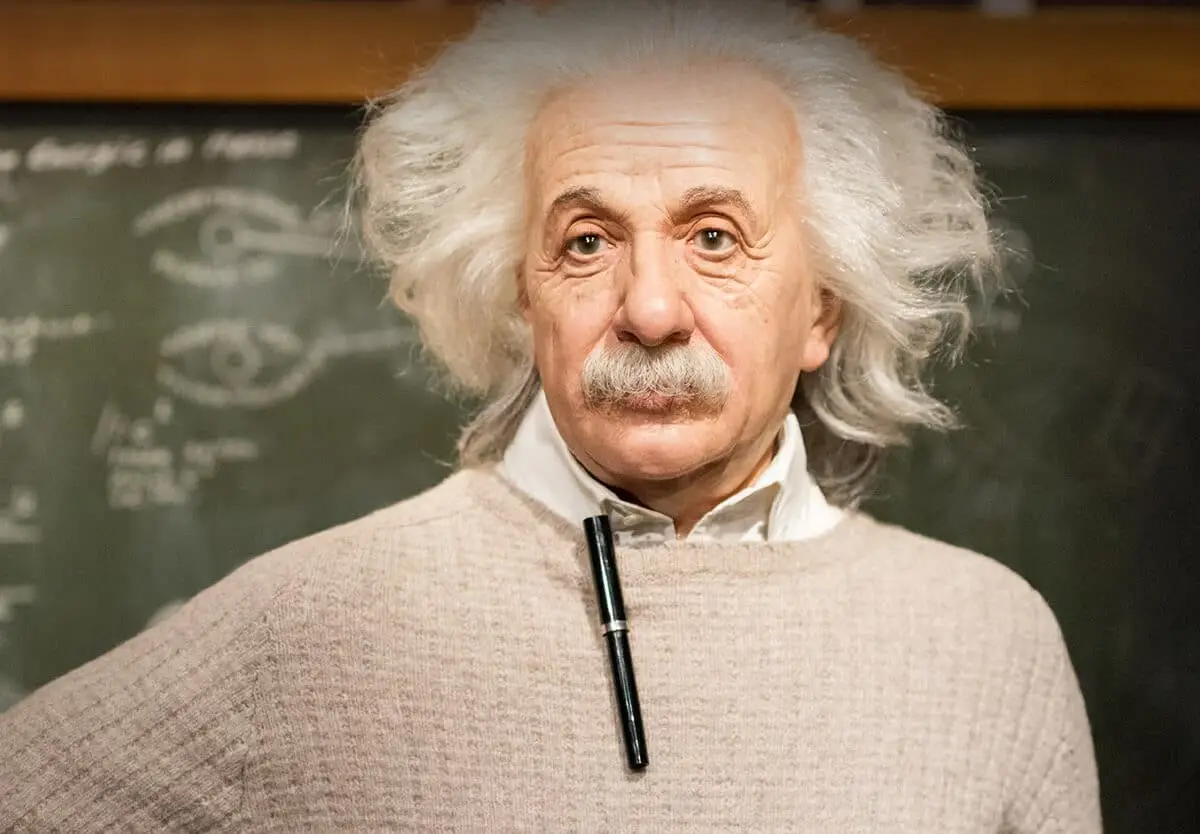- RESEARCHDistance Learning at AIU is enhanced by vast academic resources and innovative technologies build into the Virtual Campus: Hundreds of self-paced courses with video lectures and step by step lessons, thousands of optional assignments, 140,000 e-books, the Social Media & Networking platform allowing collaboration/chat/communications between students, and MYAIU develop students holistically in 11 areas beyond just academics.
- PROGRAMS OFFERED
- Areas of Study
- Courses and Curriculum
- Open Courses
- Register for a Program
- Associate Program
- Associate in Addiction Counseling
- Associate in Agriculture Food And Resources
- Associate in Anti Terrorism Security
- Associate in Behavior Analysis In Special Education
- Associate in Bioethics
- Associate in Climatology
- Associate in Cultural Theological Communication
- Associate in Culinary Arts
- Associate in Ecotechnology
- View all Associates Programs
- Bachelor Program
- Bachelors in Community Development
- Bachelors in Environmental Science
- Bachelor in Education (B.Ed, BS)
- Bachelors in Economics
- Bachelors in Entrepreneurship
- Bachelors in Financial Administration
- Bachelors in Human Resource Management
- Bachelors in Linguistics
- Bachelors in Nutritional Science
- Bachelors in Occupational Health and Safety
- Bachelors in Psychology
- View all Bachelor Programs
- Doctorate Program
- Doctor | of Biology (PhD)
- Doctorate in Business Administration (DBA, PhD)
- Doctor of Economics (PhD)
- Doctor of Electrical Engineering (D.Sc, PhD)
- Doctor of Finance (PhD)
- Doctorate in International Relations
- Doctorate in Information Technology (D.Sc)
- Doctor of Legal Studies (PhD)
- Doctor of Project Management (PhD)
- Doctor of Sociology (PhD, D.Sc)
- Doctorate in Sustainable Natural Resources Management
- View all Doctorate Programs
- Master Program
- Postdoctoral Program
- Postdoctoral in Animal Science
- Postdoctoral in Anti Terrorism Security
- Postdoctoral in Behavior Analysis In Special Education
- Postdoctoral in Bioethics
- Postdoctoral in Blockchain Technology and Digital Currency
- Postdoctoral in Business Management
- Postdoctoral in Cloud Computing
- Postdoctoral in Computer Engineering
- View all Postdoctoral Programs
AIU offers a wide range of majors in areas including the Arts, Business, Science, Technology, Social, and Human studies. More than 120 degrees and programs are available for adult learners at the associate’s, bachelor’s, master’s, doctoral and postdoctoral level. - VIRTUAL CAMPUS
Distance Learning at AIU is enhanced by vast academic resources and innovative technologies build into the Virtual Campus: Hundreds of self-paced courses with video lectures and step by step lessons, thousands of optional assignments, 140,000 e-books, the Social Media & Networking platform allowing collaboration/chat/communications between students, and MYAIU develop students holistically in 11 areas beyond just academics.
- ALUMNI
The world is YOUR campus!”, that is the message of AIU’s month magazine Campus Mundi. Hear the voices and see the faces that make up AIU. Campus Mundi brings the world of AIU to you every months with inspirational stories, news and achievements by AIU members from around the world (students and staff are located in over 200 countries).
What Is Forensic Evidence? Unveiling the Cornerstone of Modern Criminal Investigations

Interested to know how forensic evidence is collected and preserved?
What challenges does forensic science face?
What types of forensic evidence are commonly used in criminal investigations?
Use your research skills and write about how advancements in digital forensics impacted the ability to solve cybercrimes, and what are the ethical considerations involved in the collection and analysis of digital evidence? Use credible sources such as academic journals, educational websites, and expert interviews to gather information and present a well-rounded answer.
(Login to your student section to access the AIU Additional Resources Library.)
What Is Forensic Evidence? Unveiling the Cornerstone of Modern Criminal Investigations
In the intricate world of criminal investigations, forensic evidence stands as a beacon of truth, shedding light on the darkest mysteries. This pivotal element encompasses any items, substances, or information collected during a criminal investigation that can either support or refute aspects of a case. Forensic evidence is indispensable in solving crimes and ensuring justice, from physical materials such as fingerprints and DNA samples to digital data like emails and text messages.

Source: Foresight
The Crucial Role of Forensic Evidence in Criminal Investigations
Forensic evidence is invaluable in reconstructing events and linking suspects to crime scenes. Experts meticulously analyze these clues using various scientific techniques, helping law enforcement piece together the narrative of a crime. The credibility and rigor of forensic evidence make it a cornerstone of modern judicial processes, offering unbiased, scientific proof that can sway the outcomes of trials.
Multidisciplinary Approach to Forensic Analysis
Practical forensic analysis requires a multidisciplinary approach, combining biology, chemistry, and computer science expertise. From crime scene investigators to lab technicians, each professional contributes to the integrity and reliability of the evidence collected. This collaborative effort underscores the complexity and importance of forensic evidence in the criminal justice system.
Basics of Forensic Evidence
Forensic evidence is crucial in criminal law, providing objective data to support investigations and legal proceedings. It encompasses a variety of materials, each contributing uniquely to the pursuit of justice.
Definition and Importance
Forensic evidence refers to information collected from a crime scene that can be used in court. It includes physical, biological, and digital traces that help establish facts about a crime. Such evidence can prove the occurrence of a crime, identify perpetrators, and exonerate the innocent. Courts rely heavily on this objective data to ensure fair verdicts.

Latent fingerprints and image comparison with known sources
Source: Statistical Issues in Forensic Science
Types of Forensic Evidence
Forensic evidence can be broadly categorized into physical, biological, and digital types:
- Physical Evidence: Includes fingerprints, weapons, and fibers
- Biological Evidence: Encompasses DNA, blood, and bodily fluids
- Digital Evidence: Comprises data from electronic devices, such as emails and GPS records
Each type serves different functions in establishing a timeline, identifying involved parties, and clarifying events.
Role in Criminal Investigations
Forensic evidence is vital in criminal investigations to link suspects to crimes and validate witness statements. Investigators analyze the evidence to reconstruct the crime scene, identify suspects, and determine motives. It also plays a vital role in the courtroom, where it helps juries and judges understand complex details through expert testimony.
Collection and Analysis of Forensic Evidence
Gathering and examining forensic evidence involves established procedures, specialized laboratories, and various challenges unique to forensic science.
Evidence Collection Procedures
Evidence collection begins at the crime scene. Technicians use systematic methods to identify, collect, and preserve evidence. Proper procedure is critical to avoid contamination and maintain the integrity of the evidence. Common types of evidence include fingerprints, DNA samples, bloodstains, and fibers. Chain of custody documentation ensures evidence is tracked from collection through analysis, confirming its authenticity in court.

Source: Csafe
Forensic Laboratories and Techniques
Forensic laboratories are equipped with advanced technology to analyze evidence. They employ techniques such as DNA profiling, chromatography, and microscopy, providing reliable results crucial to investigations. Each method plays a role in unraveling criminal cases, from matching DNA samples with suspects to identifying chemical substances and examining minute details invisible to the naked eye.
Challenges in Forensic Science
Forensic science faces several challenges:
- Human Error: The potential for mistakes during evidence collection or analysis can lead to wrongful convictions
- Evolving Technology: Forensic techniques must keep pace with criminals’ evolving technology
- Funding Limitations: Resource constraints can impact the quality and speed of forensic analysis
- Legal Standards: Varying standards for evidence admissibility can affect outcomes in criminal cases
Recent Concerns and the Need for Statistical Analysis
Recent events have raised concerns about the current methods used in forensic science. Reports such as the 2009 National Research Council (NRC) report and the 2016 President’s Council of Advisors on Science and Technology (PCAST) report have questioned forensic evidence analysis’s scientific and statistical foundations. According to secondary research, cases like the wrongful identification of American lawyer Brandon Mayfield highlight the potential for errors.
The Innocence Project has identified improper forensic science as a contributor to wrongful convictions in roughly half of their cases. This underscores the need for statistical methods to strengthen forensic examinations. Statistics can help determine the accuracy of forensic conclusions, address cognitive biases, and evaluate procedural modifications, enhancing the reliability of forensic science.
Conclusion
Forensic evidence is a cornerstone of modern criminal investigations, providing objective scientific proof crucial for solving crimes and ensuring justice. Despite the challenges and recent concerns, ongoing advancements and multidisciplinary efforts continue to enhance the reliability and integrity of forensic science. Through meticulous collection, analysis, and statistical methods, forensic evidence remains an indispensable tool in pursuing justice.
If this article triggers any interest in virtual reality and its contribution in the field of education, then AIU offers a list of Mini courses, Blogs, News articles and many more on related topics that one can access such as;
AIU also offers a comprehensive array of recorded live classes spanning various subjects. If any topic piques your interest, you can explore related live classes. Furthermore, our expansive online library houses a wealth of knowledge, comprising thousands of e-books, thereby serving as a valuable supplementary resource.
Autonomous Vehicles by Mohamed Ahmed
AI with coding github copilot and chat gpt by Jay Vijayasimha
Google Hacking Database GHDB by Shafaqat Siddique
Database and Web Development & AI Live Class
Virtual Reality and Critical Civic Literacy: Reenvisioning Literacy Education for Incarcerated Youth
Assessment of preclinical learning using virtual reality based education for nursing students
Immersive virtual reality in education
Reasons associated with preservice teachers’ intention to use immersive virtual reality in education
References
What Is Forensic Evidence? | Science Times
Forensic Evidence Definition, Types & Examples – Lesson | Study.com
What is Forensic Evidence and How Can it Help? – Foresight
Forensic Evidence: Types and Characteristics (legalbites.in)
Use of Forensic Evidence in Trial – Criminal Justice – iResearchNet
Evidence Analysis and Processing | National Institute of Justice (ojp.gov)
The importance of forensic evidence for decisions on criminal guilt – ScienceDirect
FBI apologizes to lawyer held in Madrid bombings (nbcnews.com)
Reminder to our Dear Students,
Please ensure you are logged in as a student on the AIU platform and logged into the AIU Online
Library before accessing course links. This step is crucial for uninterrupted access to your learning
resources.
AIU Success Stories







Contact Us Today!
Begin Your Journey!
AIU’s Summer of Innovation and Growth gives you the ability to earn up to $5000 in tuition credit by completing free lessons and courses.
Whether you’re looking to acquire new skills, advance your career, or simply explore new interests, AIU is your gateway to a world of opportunities. With free access to 3400 lessons and hundreds of courses the ability to earn credits and earn certificates there’s no better time to start learning.
Join us today as a Guest Student and take the first step towards a brighter, more empowered future.
Explore. Learn. Achieve.

Contact Us
Atlantic International University
900 Fort Street Mall 905 Honolulu, HI 96813 info@aiu.edu
Quick Links
Home | Online Courses | Available Courses | Virtual Campus | Career Center | Available Positions | Ask Career Coach | The Job Interview | Resume Writing | Accreditation | Areas of Study | Bachelor Degree Programs | Masters Degree Programs | Doctoral Degree Programs | Course & Curriculum | Human Rights | Online Library | Representations | Student Publication | Sponsors | General Information | Mission & Vision | School of Business and Economics | School of Science and Engineering | School of Social and Human Studies | Media Center | Admission Requirements | Apply Online | Tuition | Faculty & Staff | Distance Learning Overview | Student Testimonials | AIU Blogs | Register for Program | Privacy Policy | FAQ



















